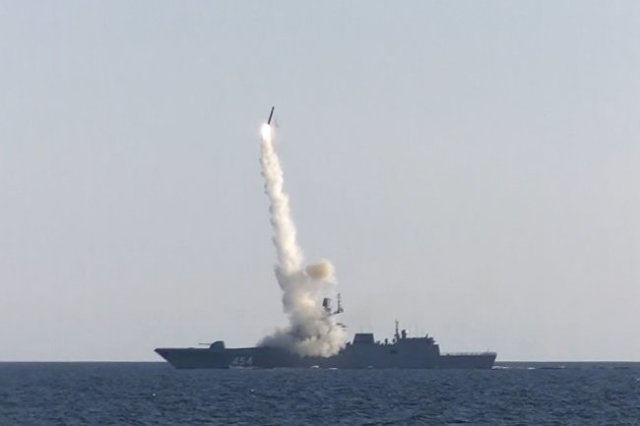A special commission based on the results of state tests of the newest hypersonic cruise missile 3M22 "Zircon" from a surface carrier recommended that it be adopted by ships of the Russian Navy. On Thursday, January 14, TASS was informed by a source close to the Russian Defense Ministry.
The long-awaited event for the Navy took place three weeks after Russian President Vladimir Putin announced the launch of the Zircon. The tests, he said, were "successful, flawlessly." In fact, this means that after the necessary procedures in such cases, the newest missile system will officially enter the arsenal of military sailors - while they will be equipped with our warships.
Serial production of such weapons is not a quick and difficult matter. Therefore, at the end of August, the military department at the Army-2021 forum concluded a contract with the Tactical Missile Armament Corporation for the supply of 3M22 missiles to the Russian Navy. As Russian Defense Minister Sergei Shoigu later stated, this contract is of a long-term nature.
It is known that the first full-time carrier of "Zircons" will be the frigate of project 22350 "Admiral Golovko". The ship has on board 16 universal launchers UKSK 3S14. They are suitable both for firing Kalibr and Onyx cruise missiles, and for launching Zircons.
As for equipping the nuclear submarines of Project 885 "Yasen" and "Yasen-M" with hypersonic weapons, then, according to a TASS source, a decision on them will be made after the completion of tests of a cruise missile from a submarine. Two such launches last fall were successfully carried out by the crew of the Severodvinsk nuclear-powered vessel. There was information that the sailors would continue the test firing from under the water.
The Zircon is the world's first hypersonic cruise missile capable of long-term aerodynamic flight at a speed of about Mach 9, with maneuvering in dense layers of the atmosphere and using its own engine thrust along the entire route. Tests show that the Zircon can hit both surface and ground targets located at a long range from the launch site with the same efficiency.
Yuri Gavrilov

